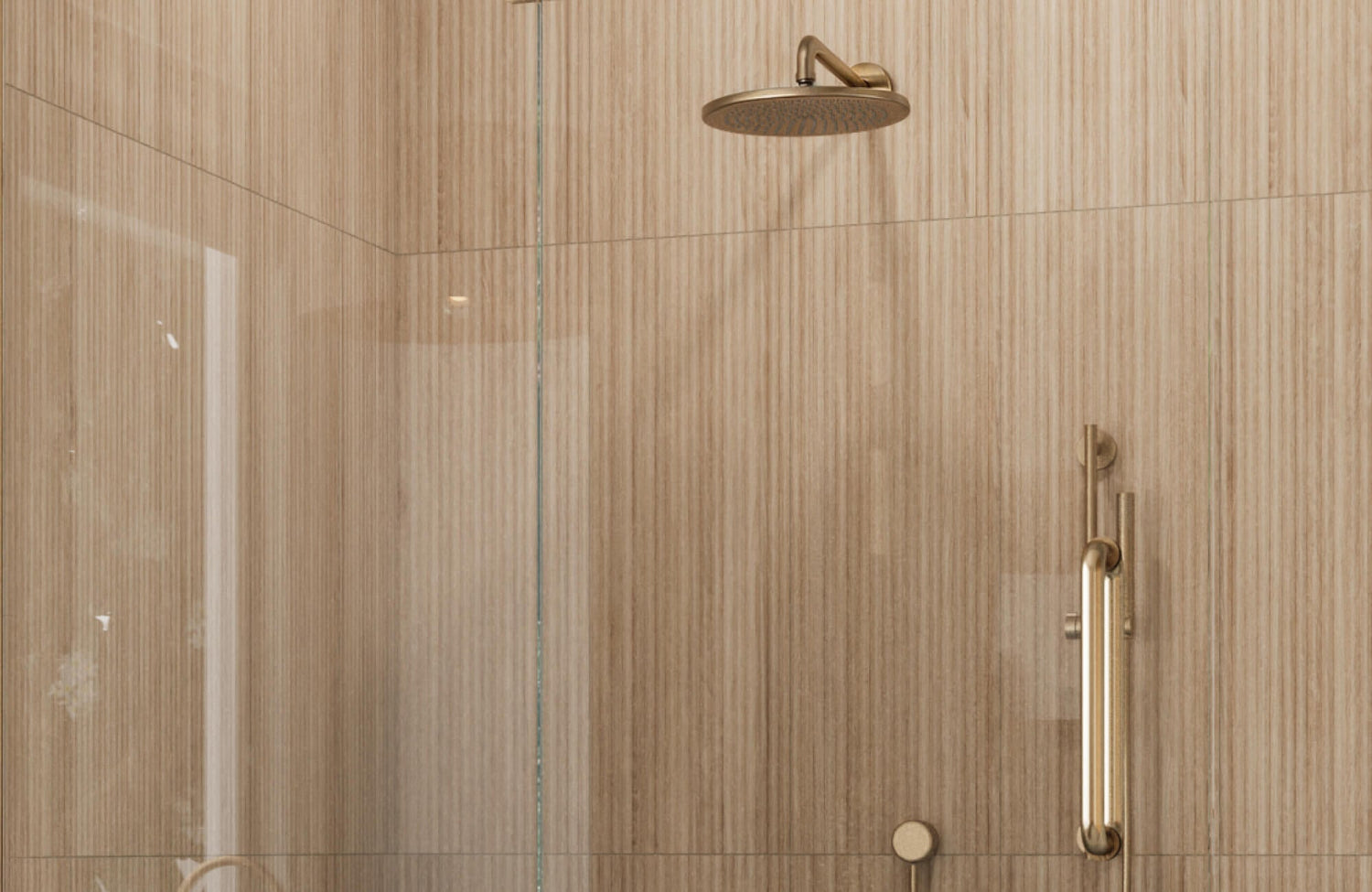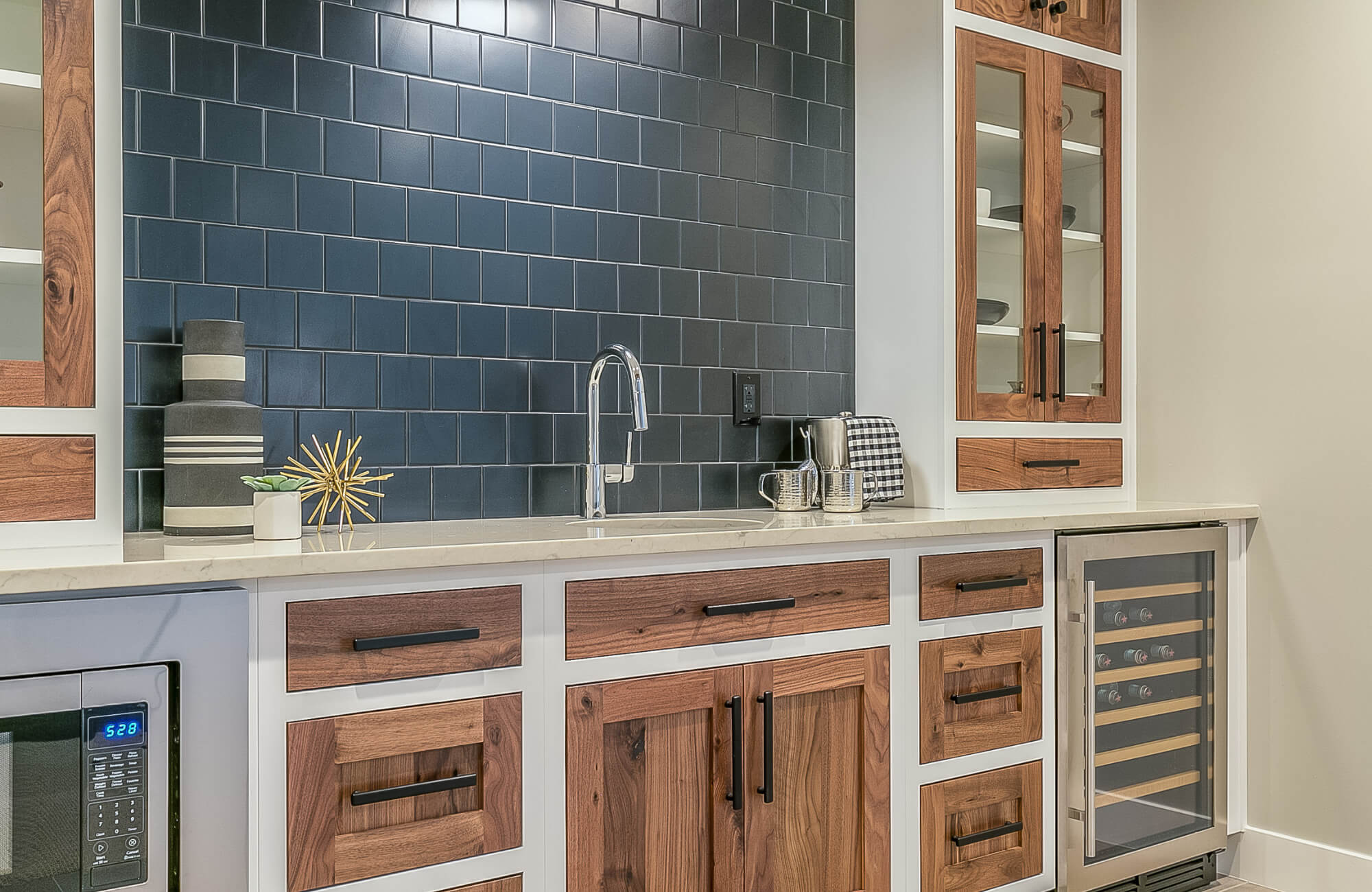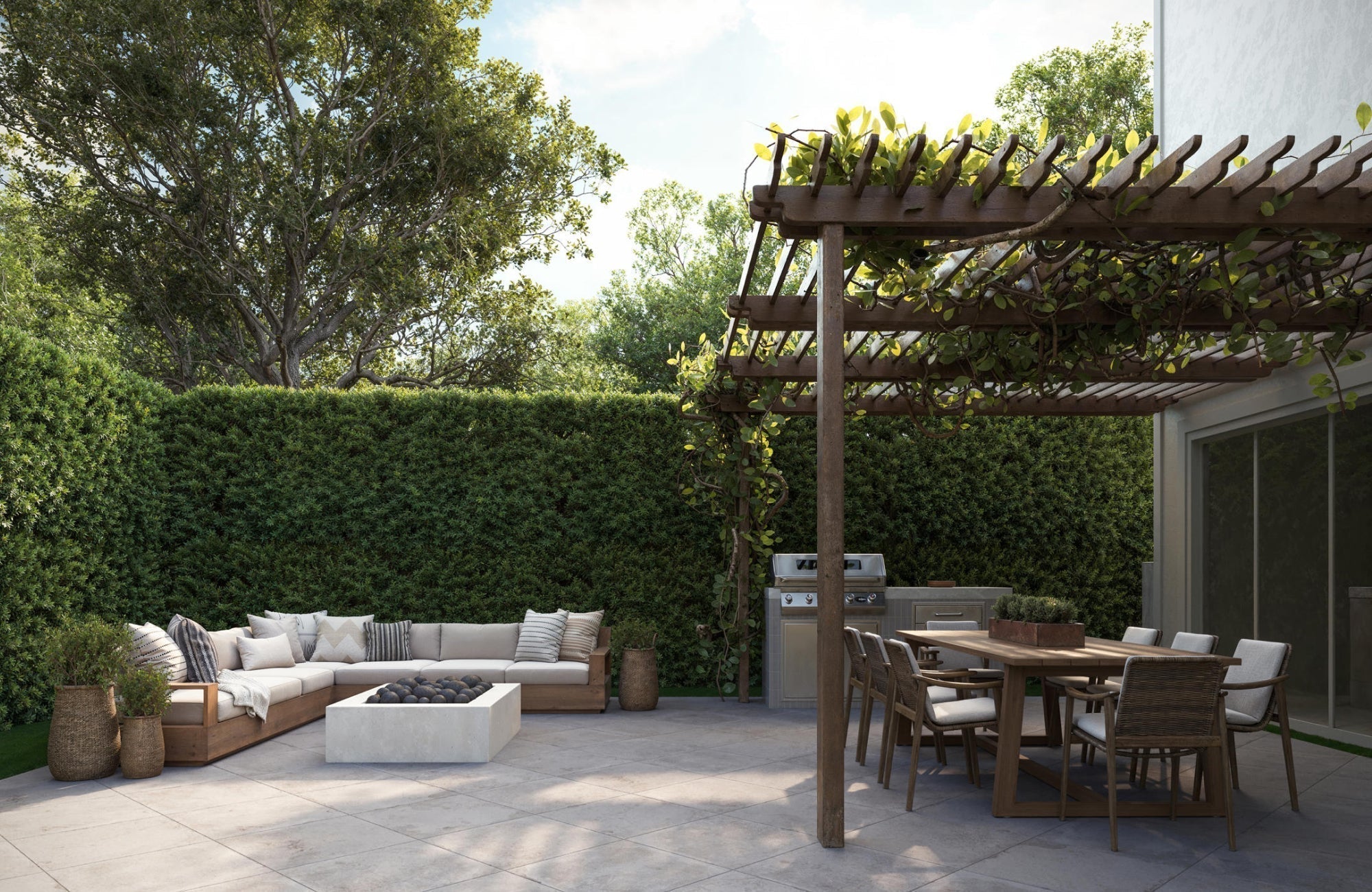From sunbaked terracotta to rich espresso and soft sand, brown tile evokes the enduring beauty of nature’s most grounded hues. Long associated with warmth, stability, and timeless elegance, it has reclaimed its place in contemporary design through refined craftsmanship and material innovation. Today’s brown tiles offer a sophisticated blend of texture, tone, and performance that complements both minimalist and maximalist interiors. Their versatility makes them a favored choice in wellness spaces, modern kitchens, and architectural designs rooted in organic expression.
This article explores the renewed relevance of brown tile, from its rising presence in earthy interior trends to the technical sophistication of modern ceramic production. It also examines the emotional resonance of brown tones, their sustainable advantages, and the art of styling them in architectural spaces. Whether softening minimalist palettes or anchoring biophilic environments, brown tile proves itself not just in style but essential to the language of thoughtful design.

The Revival of Earth Tones in Interior Design
Designers are embracing brown tones for their warmth, grounding presence, and compatibility with natural textures. Brown tile contributes to interiors that feel organic, serene, and visually rich, reflecting a broader trend toward nature-inspired palettes.
Biophilic and Naturalism-Inspired Interiors
Brown ceramic tiles play a significant role in biophilic design by echoing the earthy textures and tones found in the natural world. Shades reminiscent of soil, stone, and bark help foster a sense of psychological well-being, grounding interior spaces in nature’s calming presence. This makes brown tiles especially well-suited for serene environments like spas, bathrooms, and wellness centers.
When paired with natural daylight, brown surfaces come alive, revealing subtle depth and enhancing the authenticity of the material. A standout example is Edward Martin’s Jameson 12x36 Matte Ceramic Tile in Camel Deco, as displayed in the photo above. Its soft, sun-washed tones and gently linear texture evoke the quiet beauty of desert landscapes, offering a grounded, organic feel ideal for interiors that seek both warmth and simplicity.
Beyond aesthetics, brown tiles contribute to spatial storytelling that emphasizes natural immersion. When thoughtfully combined with elements like greenery, water features, or earthen architecture, they help shape sensory-rich environments that support tranquility and emotional balance, bringing a restorative, nature-inspired harmony indoors.
Warmth-Driven Minimalism and Japandi Aesthetics
Japandi interiors prioritize simplicity without sterility, making brown ceramic tile a key material for warmth and contrast. Matte brown tiles, in particular, gently soften the sharpness of modernist lines while anchoring pale wood and neutral walls with subtle depth. Their tactile surface introduces quiet texture, enhancing the overall sensory balance of the space. This look often leans into a palette of clay, sand, and walnut tones, all chosen for their ability to create visual calm. The result is a minimalist aesthetic that still feels warm, grounded, and effortlessly livable.
In addition, brown tile works beautifully with organic materials like bamboo and raw cotton, enriching the space with a balanced, tactile experience. These elements reinforce Japandi’s emphasis on serene functionality and quiet sophistication through harmonious color and form.
Balancing Monochromatic Schemes
Brown tiles introduce tonal variation into grayscale or white-based interiors, avoiding flatness. For example, mid-browns and warm taupes act as neutral anchors, providing visual separation between planes. Their presence enhances architectural features like stair risers or alcoves. In kitchens and baths, they pair effortlessly with stainless steel or brushed brass. This balance makes them adaptable to both cool and warm palettes.
By thoughtfully incorporating brown ceramic tile into monochromatic schemes, you can introduce contrast while preserving a sense of harmony. The rich, grounding character of these tones adds visual interest and texture, supporting a wide range of design aesthetics, from modern minimalism to transitional and contemporary styles.

Ceramic Tile Technology
Innovations in ceramic tile manufacturing have elevated brown tile from a basic finish to a high-performance surface. Advanced printing, firing, and edge treatments offer refined aesthetics and precise installation outcomes.
Digital Inkjet Printing and Hyper-Realistic Finishes
With the help of inkjet printing technology, brown ceramic tiles can now emulate the look of natural materials like walnut, oxidized stone, and leather with remarkable authenticity. This high-resolution process captures fine details that enhance realism, while still maintaining the practical, low-maintenance qualities ceramic is known for. Beyond surface appearance, the technology also allows for layered color application, adding depth, dimension, and subtle shadowing that enriches the overall visual texture. The addition of UV-resistant glazes helps preserve these intricate details over time, protecting against fading and wear. Together, these advancements make printed ceramic tiles a compelling choice for those seeking the warmth and character of organic materials, without compromising on durability or ease of care.
Refined Ceramic Materials and Technologies
Advancements in ceramic tile production have also transformed it from a basic finish into a refined, high-performance surface. Today’s ceramic category includes a range of materials, most notably porcelain, which is fired at higher temperatures and made from denser clay. These refinements result in tiles that offer elevated durability, moisture resistance, and structural integrity while maintaining visual versatility.
A notable example is the Catalina 7x8 Hexagon Matte Porcelain Tile in Clay, as shown in the photo above. It combines porcelain’s performance with an earthy hue and geometric form, making it ideal for spaces that require both resilience and organic character. These innovations have significantly expanded how brown tile can be used across residential, commercial, and outdoor applications.
From busy entryways to wet-zone installations, these advanced ceramic materials also support both style and longevity in challenging environments. Their technical superiority aligns with sustainable building practices, ensuring lasting value and reduced maintenance.
Edge Treatments and Tile Calibration
Rectified brown tiles, cut post-firing for precision, allow minimal grout lines and seamless transitions. This precision is especially valuable in open-concept spaces, where tile continuity enhances the sense of cohesion. Their calibrated sizing reduces installation inconsistencies, making them well-suited for large-scale projects where efficiency and uniformity matter. Together, these features not only support modern, streamlined aesthetics but also maximize usable surface area. The result is a clean, unified floor or wall plane with little to no visual interruption.
Thanks to their exact edges, rectified ceramic tiles are ideal for sleek, architectural interiors that prioritize clean lines and uninterrupted transitions. Their consistent dimensions also open up possibilities for advanced layout patterns, such as stacked or grid alignments, that contribute to a refined, rhythmic spatial design.
Color Psychology and Spatial Behavior of Brown Tile
Brown tile influences mood, spatial perception, and design tone through its organic warmth and emotional associations. It helps define areas, evoke calm, and guide flow within both residential and commercial spaces.
Emotional Resonance and Psychological Comfort
Brown tones naturally evoke feelings of trust, warmth, and grounding—qualities that contribute to a sense of safety and relaxation within a space. With their earthy character, these hues are particularly well-suited to environments that prioritize intimacy and rest. Ceramic tiles in shades like cocoa, chestnut, or umber introduce a quiet richness that enhances the emotional tone of a room without overwhelming it. This makes them especially appealing in settings such as bedrooms, therapy spaces, or boutique hotels, where creating a stable and nurturing atmosphere is key.
Beyond aesthetics, this organic palette aligns seamlessly with wellness-focused interior design, where psychological comfort is just as important as visual appeal. By integrating brown tiles into emotionally sensitive spaces, you can foster a deeper sense of presence, ease, and natural calm.
Visual Weight and Space Perception
Darker browns have a natural ability to absorb light, helping to define edges and visually anchor larger spaces. In contrast, lighter shades like fawn or beige can open up smaller rooms, offering warmth and brightness without defaulting to stark white. When tiles feature subtle gradations in tone, they can also visually elongate walls or bring a sense of balance to overhead spaces. These nuanced shifts in color and texture work together to enhance architectural clarity and improve the flow within a room. Designers often use these effects intentionally to shape both the emotional atmosphere and visual experience of a space.
Beyond aesthetics, brown tile also plays a key role in visual zoning, quietly delineating different functional areas while maintaining a cohesive overall look. This makes it especially effective in open-concept layouts and multi-use environments, where subtle transitions matter.
Functional Aesthetics in Transitional Zones
In busy areas like mudrooms or entryways, brown tile conceals dirt and wear better than lighter options. Textured ceramic finishes further enhance functionality by increasing traction, an important safety feature near exterior doors where moisture and debris are common. In addition to being slip-resistant, these tiles are highly resistant to staining and water damage, which helps minimize maintenance over time.
Despite their durability, they maintain a cohesive and elevated aesthetic, allowing utility and design to work hand in hand. This thoughtful blend of form and function makes brown tile an ideal choice for transitional spaces that demand both style and performance. Its proven resilience in high-use zones also positions brown ceramic tile as a smart investment in practical luxury—durable enough for everyday use, yet refined enough to support a long-lasting, polished look.
Environmental Sustainability and Lifecycle Advantages
Brown ceramic tiles offer both eco-efficiency and longevity, aligning with the growing emphasis on sustainable architecture. Their natural material base, durability, and thermal properties support energy-conscious and low-waste building strategies.
Material Composition and Recycled Content
Ceramic tile is primarily made from natural clay and is often enhanced with post-industrial and post-consumer recycled materials, reinforcing its role as an environmentally responsible choice. Brown hues, typically achieved using iron oxide pigments, help minimize reliance on synthetic colorants while maintaining a warm, earthy aesthetic. Many manufacturers now offer brown ceramic tile collections containing over 40% recycled content, aligning with sustainable building goals. These tiles can also contribute to LEED points by supporting regional sourcing and material reuse. In this way, they offer both environmental benefits and design versatility, proving that sustainability doesn’t have to come at the expense of style.
Thermal Mass and Passive Climate Control
Brown ceramic tiles naturally absorb solar heat throughout the day and release it gradually, helping to moderate indoor temperatures. This thermal behavior makes them especially valuable in passive solar design strategies aimed at reducing reliance on HVAC systems. Darker shades, in particular, perform well in sunlit areas, enhancing heat retention. By supporting more stable indoor conditions, these tiles contribute not only to occupant comfort but also to lower energy consumption. Their effectiveness is especially notable in climates with significant day-to-night temperature swings, where thermal regulation can have the greatest impact.
Longevity and End-of-Life Impact
Ceramic tiles are known for their impressive longevity, often lasting over 30 years with minimal signs of wear. Brown ceramic tiles, in particular, retain their color and surface integrity over time, reducing the need for replacement and minimizing their contribution to landfill waste. Additionally, they emit no volatile organic compounds (VOCs) and remain chemically inert throughout their use, making them a safe and stable choice for interior environments. At the end of their lifecycle, these tiles can also be responsibly repurposed, either crushed for use in sub-base materials or integrated into reclaimed design applications. This durability and reusability make ceramic tiles a strong fit for sustainable, long-term architectural planning.

Styling Strategies and Contemporary Market Trajectories
Modern styling methods and shifting consumer preferences continue to drive demand for versatile, warm-toned surfaces like brown tile. Layout innovation, mixed-material pairings, and a focus on atmospheric spaces keep brown ceramic relevant across evolving design markets.
Layout Patterns and Textural Play
Layouts like chevron, herringbone, and modular patterns bring a sense of movement and complexity to brown ceramic tile installations, transforming them from basic surfaces into design-forward features. Beyond aesthetics, these patterns subtly guide the eye, shaping perceptions of space, direction, and flow. What begins as a simple brown tone evolves into a striking visual element, enriched by layout choices that infuse depth and character. In this way, traditional colors are reimagined through contemporary spatial storytelling, where pattern becomes a language of its own. The resulting visual rhythm not only enhances the structure of open-plan environments but also elevates brown ceramic tile into a dynamic part of the architectural narrative.
Material Pairings and Palette Coordination
Brown tiles, in general, coordinate naturally with brass, matte black, light oak, and linen tones for cohesive palettes. These pairings highlight brown’s flexibility across industrial, rustic, and transitional styles. A standout example, as displayed in the picture above, is our Zayne 12x36 Matte Ceramic Tile in Slat, which combines linear texture with a light, warm shade of brown that echoes light wood paneling. It complements sage cabinetry, woven baskets, and striped textiles effortlessly, creating a layered, approachable aesthetic with architectural clarity. The right combinations enhance warmth while maintaining visual balance. This versatility also allows brown tile to act as a unifying element across diverse materials and finishes. Whether used as flooring or a feature wall, it grounds the palette with organic richness and modern cohesion.
Market Demand and Design Forecasting
Consumer interest in earthy, timeless, and low-maintenance finishes continues to drive the relevance of brown ceramic tile in today’s market. This demand is particularly strong within wellness-focused and biophilic design spaces, where natural aesthetics and tactile materials play a central role. In response, tile manufacturers are broadening their brown tile collections to include oxidized, smoked, and richly textured variations—options that resonate with the growing desire for interiors that feel both sensory-rich and emotionally grounded. Thanks to its blend of practicality and natural beauty, brown tile remains a versatile and enduring choice. As industry forecasts indicate, its presence is also expected to expand across luxury residential, hospitality, and mixed-use developments in the years ahead.
Whether you’re designing a calming retreat or a bold contemporary space, styling brown tile successfully requires a balance of texture, layout, and palette coordination. For homeowners, architects, and developers seeking tailored material guidance, Edward Martin’s design services offer expert insight rooted in both aesthetic vision and technical precision. Our team collaborates closely to curate tile solutions that align with your spatial goals, sustainability standards, and budget. From concept to specification, we ensure every surface detail enhances the overall design narrative.
The Enduring Value of Brown Ceramic Tile
Brown ceramic tile continues to evolve in relevance through its emotional resonance, technical sophistication, and alignment with sustainability and style trends. With innovations in surface design, durable materials, and nuanced styling, it supports modern interiors that are warm, grounded, and architecturally expressive. From passive solar performance to psychological comfort, brown tile proves it is more than in style; it is integral to the future of thoughtful, resilient design.
To experience the material firsthand and explore its potential in your space, request a curated tile sample through Edward Martin. Our sample program helps you evaluate texture, tone, and finish with clarity, ensuring every selection supports your project’s design intent.









